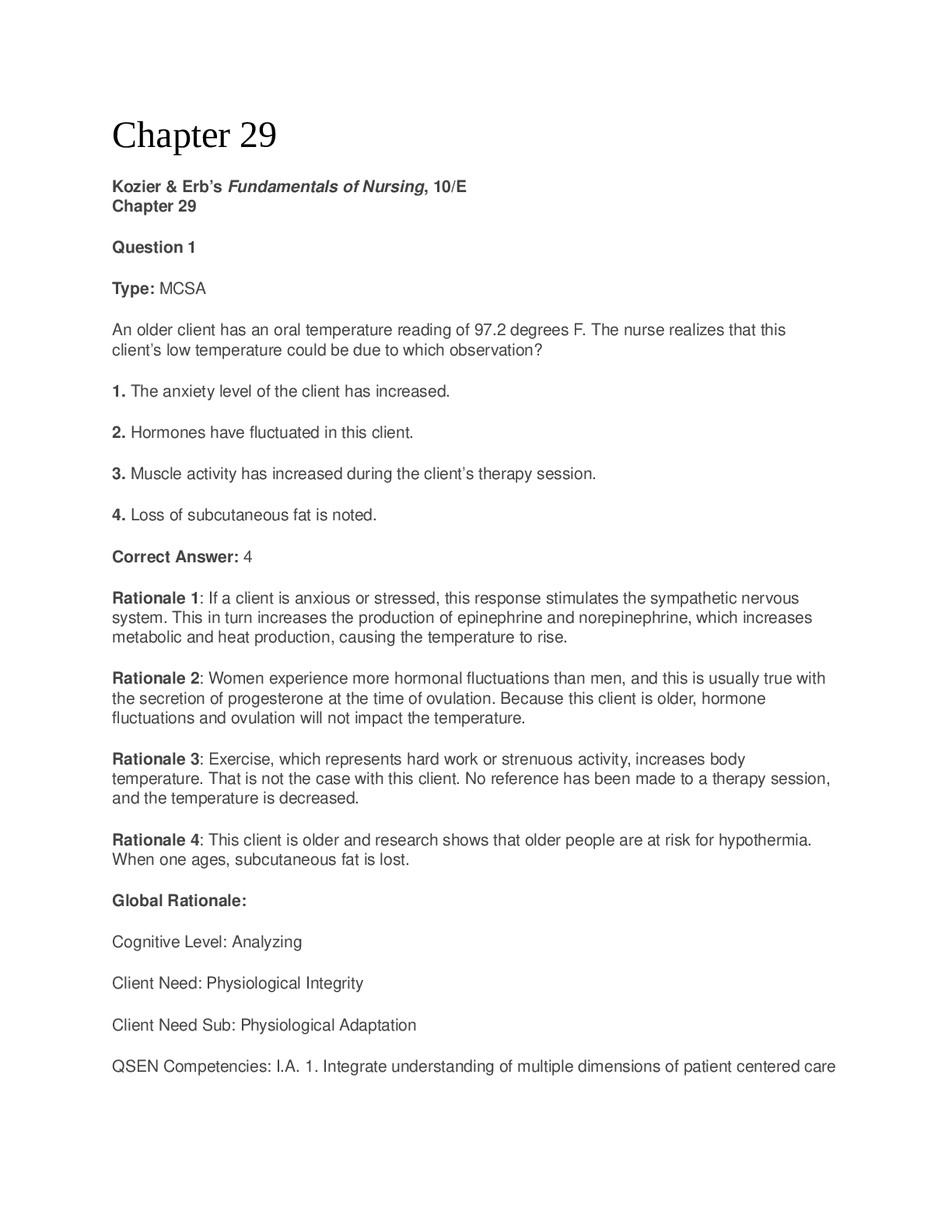*NURSING > TEST BANKS > Chamberlain College of Nursing Musculoskeletal Disorders TEST BANK 133 PAGES (All)
Chamberlain College of Nursing Musculoskeletal Disorders TEST BANK 133 PAGES
Document Content and Description Below
Musculoskeletal Disorders TEST BANK 1. Which of the following cells produce new bone? a. Osteocytes b. Osteoblasts c. Osteoclasts d. Stem cells from the bone marrow ANS: B REF: 159 2. What i... s the chemical transmitter released at the neuromuscular junction? a. Norepinephrine b. GABA c. Serotonin d. Acetylcholine ANS: D REF: 161 3. What are the two types of bone tissue? a. Vascular and nonvascular b. Spongy and calcified c. Compact and cancellous d. Dense and pliable ANS: C REF: 159 4. Which of the following would identify an open or compound fracture? a. The skin and soft tissue are exposed at the fracture site. b. A bone is crushed into many small pieces. c. The bone appears bent with a partial fracture line. d. One end of a bone is forced into an adjacent bone. ANS: A REF: 164 5. Which of the following describes a Colles’ fracture? a. The distal radius is broken. b. The distal fibula is broken. c. A vertebra appears crushed. d. A spontaneous fracture occurs in weakened bone. ANS: A REF: 165 6. During the fracture healing process, the hematoma: a. is broken down and absorbed immediately. b. provides the base for bone cells to produce new bone. c. is the structure into which granulation tissue grows. d. produces fibroblasts to lay down new cartilage. ANS: C REF: 166 7. When a fracture is healing, the procallus or fibrocartilaginous callus: a. can bear weight. b. serves as a splint across the fracture site. c. is the tissue that lays down new cartilage. d. is made up of new bone. ANS: B REF: 166 8. The inflammation surrounding a fracture site during the first few days may complicate healing by causing: a. excessive bone movement. b. severe ischemia and tissue necrosis. c. malunion or nonunion. d. fat emboli to form. ANS: B REF: 166167 9. What is a sign of a dislocation? a. Crepitus b. Pain and tenderness c. Increased range of motion at a joint d. Deformity at a joint ANS: D REF: 168 10. All of the following predispose to osteoporosis EXCEPT: a. weightbearing activity. b. a sedentary lifestyle. c. longterm intake of glucocorticoids. d. calcium deficit. ANS: A REF: 169 11. Which of the following statements does NOT apply to osteoporosis? a. Bone resorption is greater than bone formation. b. It causes compression fractures of the vertebrae. c. Osteoporosis is always a primary disorder. d. It often leads to kyphosis and loss of height. ANS: C REF: 169 12. Which of the following best describes the typical bone pain caused by osteogenic sarcoma? a. Intermittent, increasing with activity b. Sharp, increased with joint movement c. Mild, aching when weightbearing d. Steady, severe, and persisting with rest ANS: D REF: 171 13. How is Duchenne’s muscular dystrophy inherited? a. Autosomal recessive gene b. Xlinked recessive gene c. Autosomal dominant gene d. Codominant gene ANS: B REF: 172 14. Which of the following is true about Duchenne’s muscular dystrophy? a. There is difficulty climbing stairs or standing up at 2 to 3 years of age. b. It involves only the legs and pelvis. c. Skeletal muscle atrophy can be seen in the legs of a toddler. d. It cannot be detected in any carriers. ANS: A REF: 172 15. The most common type of joint, which are freely movable, are called: a. Synarthroses b. Amphiarthroses c. Anarthroses d. Diarthroses ANS: D REF: 163 16. Which of the following is characteristic of osteoarthritis? a. Inflammation and fibrosis develop at the joints. b. Degeneration of articulating cartilage occurs in the large joints. c. It progresses bilaterally through the small joints. d. There are no changes in the bone at the affected joints. ANS: B REF: 173174 17. What is a typical characteristic of the pain caused by osteoarthritis? a. Decreases over time b. Quite severe in the early stages c. Aggravated by general muscle aching d. Increased with weightbearing and activity ANS: D REF: 174 18. What limits joint movement in osteoarthritis? a. The osteophytes and irregular cartilage surface b. The wider joint space c. Decreased amount of synovial fluid in the cavity d. Fibrosis involving the joint capsule and ligaments ANS: A REF: 174 19. Joints affected by osteoarthritis can sometimes affect healthy joints by: a. causing enzymes to be released that travel to other joints. b. bacteria traveling from the affected join to a healthy one through the bloodstream. c. inflammation and edema affecting the entire limb. d. the affected individual’s exerting stress on the normal joint to protect the damaged one. ANS: D REF: 174 20. What is the typical joint involvement with rheumatoid arthritis? a. Random single joints, progressing to involve other joints b. Bilateral small joints, symmetrical progression to other joints c. Abused or damaged joints first, then joints damaged by compensatory movement d. Progressive degeneration in selected joints ANS: B REF: 177 21. What is the basic pathology of rheumatoid arthritis? a. Degenerative disorder involving the small joints b. Chronic inflammatory disorder affecting all joints c. Systemic inflammatory disorder due to an autoimmune reaction d. Inflammatory disorder causing damage to many organs ANS: C REF: 175177 22. How is the articular cartilage damaged in rheumatoid arthritis? a. Enzymatic destruction by the pannus b. Inflamed synovial membrane covers the cartilage c. Fibrous tissue connects the ends of the bones d. Blood supply to the cartilage is lost ANS: A REF: 175 23. How does the joint appear during an exacerbation of rheumatoid arthritis? a. Relatively normal b. Enlarged, firm, crepitus with movement c. Deformed, pale, and nodular d. Red, warm, swollen, and tender to touch ANS: D REF: 177 24. Ankylosis and deformity develop in rheumatoid arthritis because: a. skeletal muscle hypertrophies. b. fibrosis occurs in the joint. c. replacement cartilage changes alignment. d. ligaments and tendons shorten. ANS: A REF: 176 25. Systemic effects of rheumatoid arthritis are manifested as: a. nodules in various tissues, severe fatigue, and anorexia. b. headache, leukopenia, and high fever. c. swelling and dysfunction in many organs. d. progressive damage to a joint. ANS: A REF: 176 26. What is a common effect of longterm use of glucocorticoids to treat rheumatoid arthritis? a. Leukocytosis b. Osteoporosis c. Severe anemia d. Orthostatic hypotension ANS: B REF: 177 27. Juvenile rheumatoid arthritis (JRA) differs from the adult form in that: a. only small joints are affected. b. rheumatoid factor is not present in JRA, but systemic effects are more severe. c. onset is more insidious in JRA. d. deformity and loss of function occur in most children with JRA. ANS: B REF: 177 28. Which of the following distinguishes septic arthritis? a. Multiple joints that are swollen, red, and painful at one time b. Presence of mild fever, fatigue, and leukocytosis c. Purulent synovial fluid present in a single, swollen joint d. Presence of many antibodies in the blood ANS: C REF: 178 29. Which of the following may precipitate an attack of gout? a. A sudden increase in serum uric acid levels b. Severe hypercalcemia c. Mild trauma to the toes d. Development of a tophus ANS: A REF: 178 30. Where does inflammation usually begin in an individual with ankylosing spondylitis? a. Costovertebral joints with progression down the spine b. Cervical and thoracic vertebrae, causing kyphosis c. Sacroiliac joints with progression up the spine d. Peripheral joints and then proceeds to the vertebrae ANS: C REF: 178 [Show More]
Last updated: 2 years ago
Preview 1 out of 131 pages

Buy this document to get the full access instantly
Instant Download Access after purchase
Buy NowInstant download
We Accept:

Reviews( 0 )
$30.00
Can't find what you want? Try our AI powered Search
Document information
Connected school, study & course
About the document
Uploaded On
Sep 19, 2021
Number of pages
131
Written in
Additional information
This document has been written for:
Uploaded
Sep 19, 2021
Downloads
0
Views
88







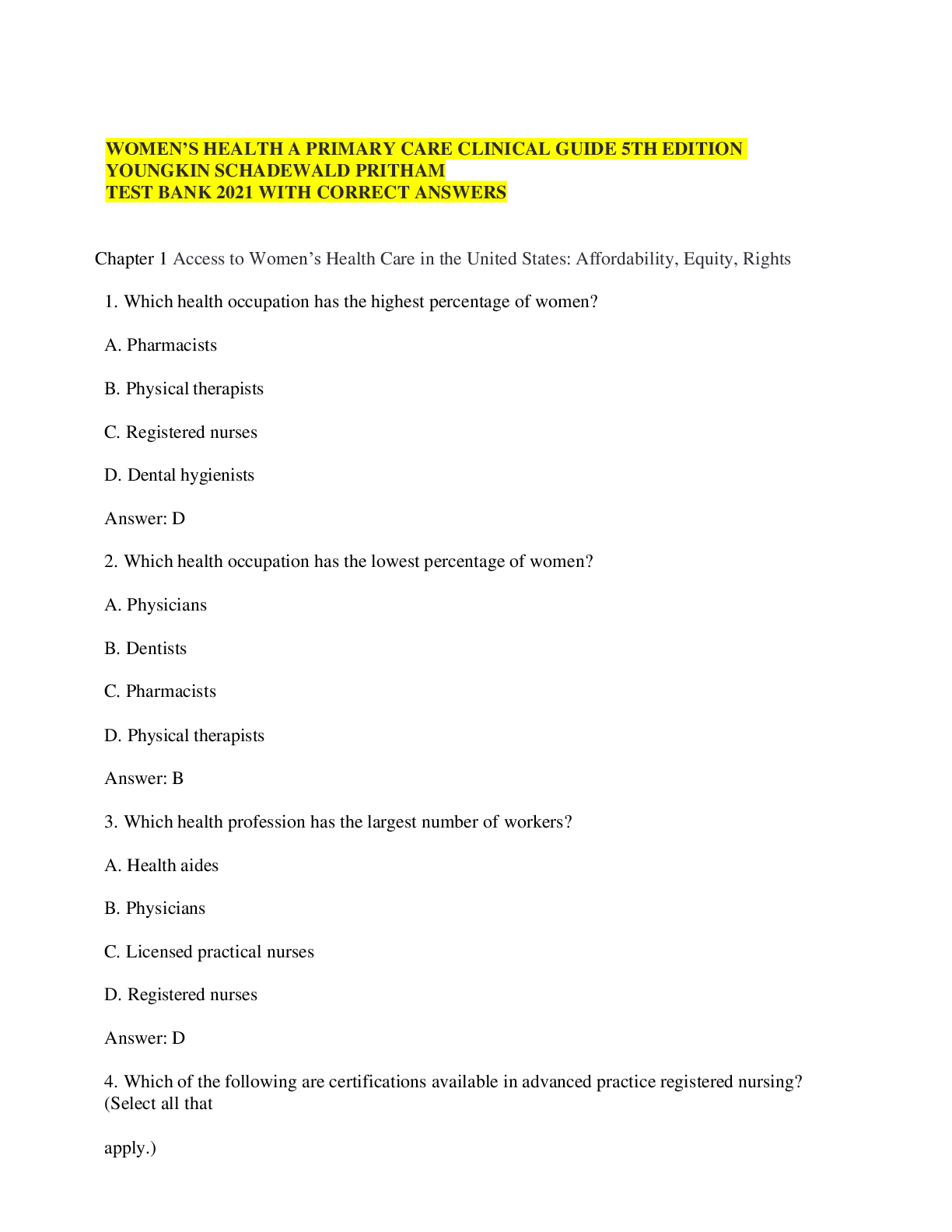



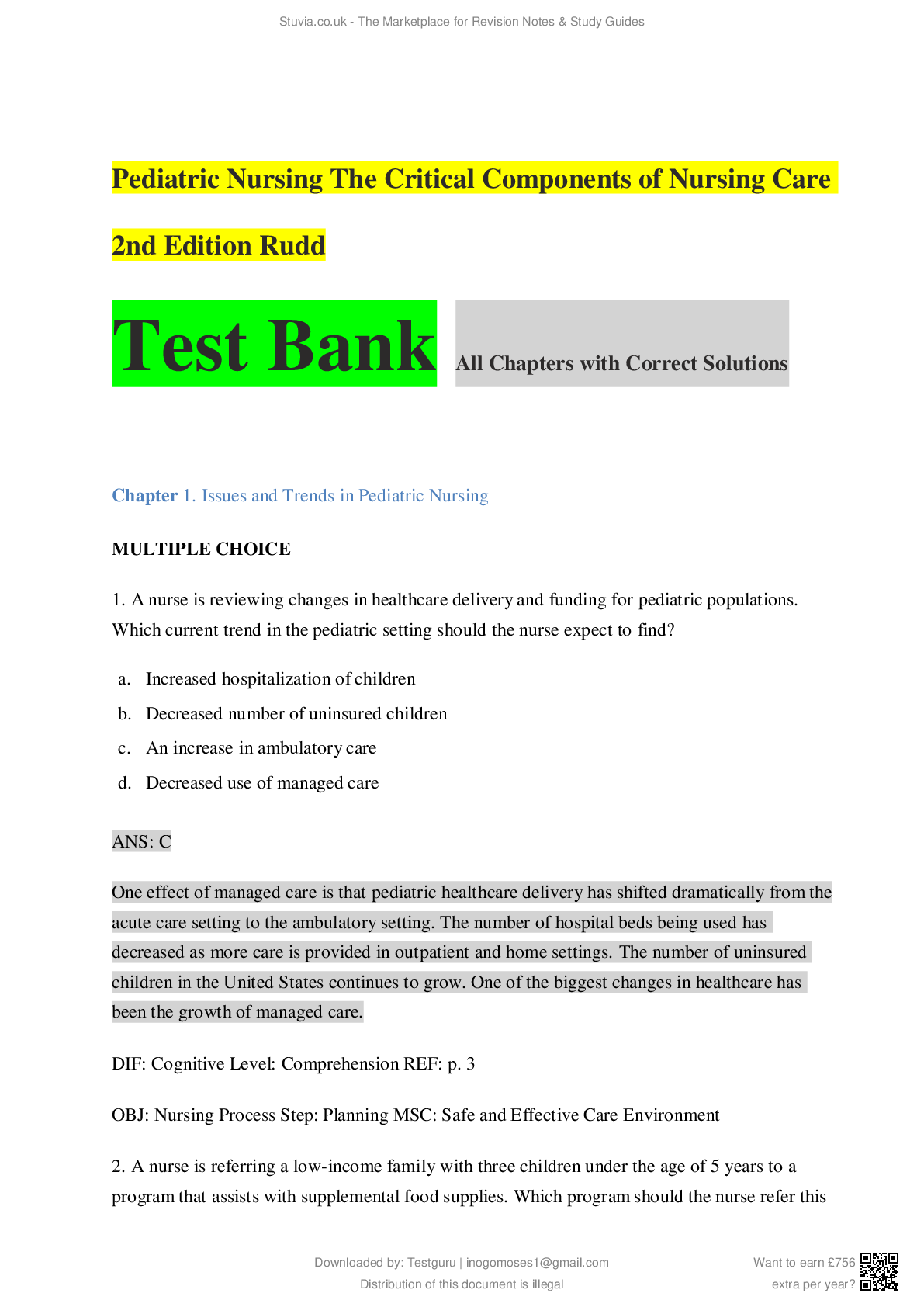

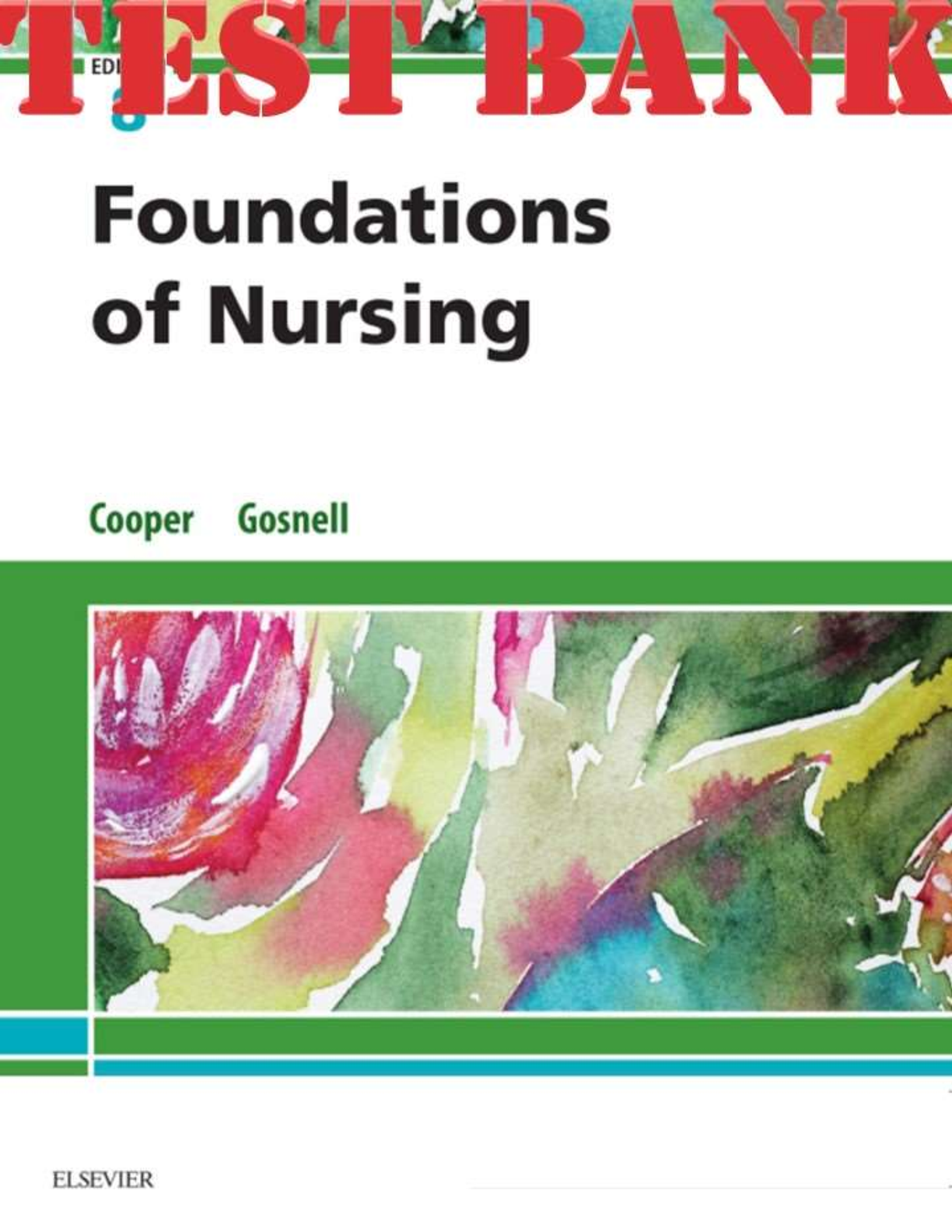

.png)
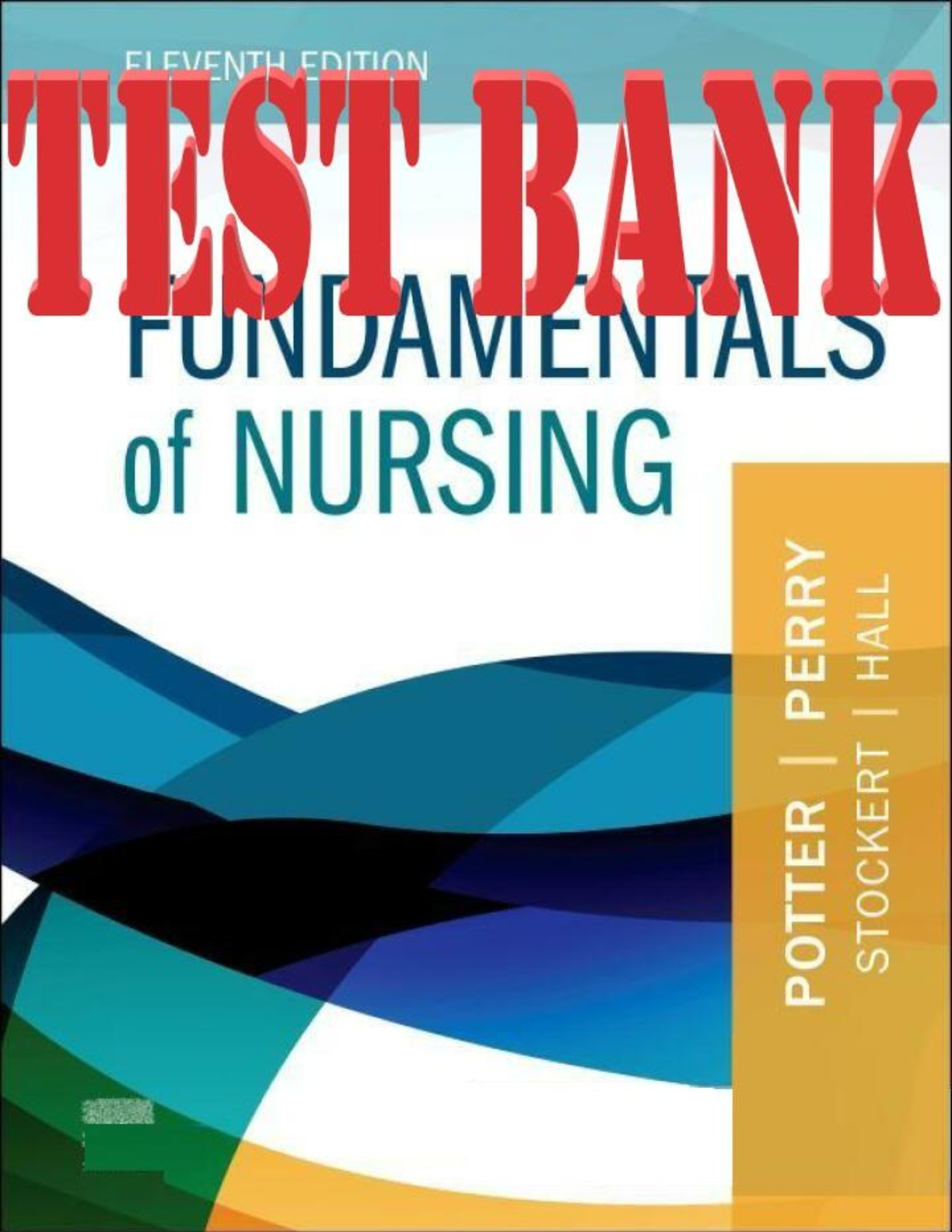
.png)


